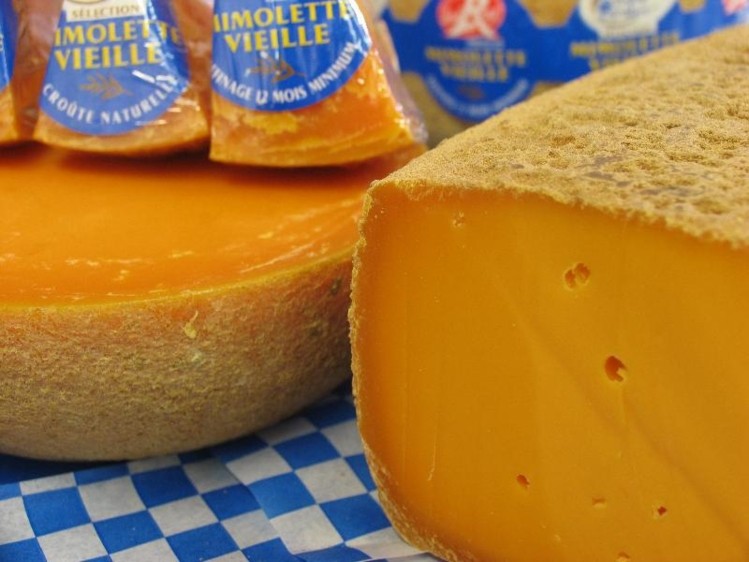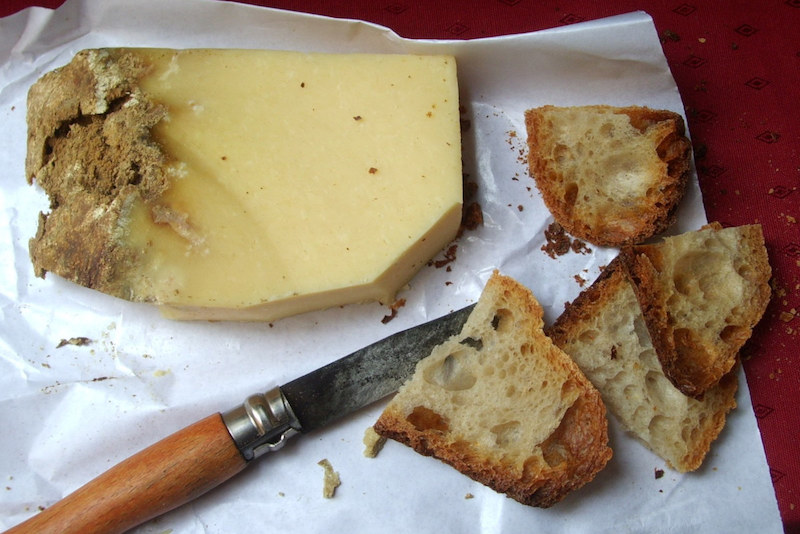What Are Cheese Mites and Should I be Concerned?

For certain cheeses, cheese mites (also known as Tyrophagus casei) are purposefully being deployed by an affineur for two reasons:
- These minuscule acarians are tamed and they can give cheesemakers a very accurate visual indication of the maturity of a cheese.
- Cheese mites have the ability to pierce and change the texture of the rind and flavor of the cheese.
Cheese mites feed on the rind of the cheese in highly-controlled caves d’affinage and cheese-aging chambers to help the rind to breathe and the cheese to develop, creating a more flavorful and aromatic cheese.
To put it simply, your cheese would not look or taste as good without these little spidery mites.
Did you know?
Flour mites – also known as Acarus siro – are being injected into the famous Mimolette cheese to give it its distinctive flavor and texture. Unfortunately, the FDA banned it from entering the U.S. in 2013. Nevertheless, the ban has since been lifted in 2014 due to the lack of evidence to support their claims.
Also read: What is Affinage in Cheesemaking?
The Controlling of Cheese Mites
These microscopic creatures are so tiny that they are practically invisible to our naked eyes. They look just like dust except they are not.
The good new is, cheese mites breeding can be controlled by temperatured adjustment or by using Dust Food Grade Diatomaceous Earth (DE).
The colder the caves d’affinage, the less cheese mites like it.
If left uncontrolled, cheese mites will take over the cheese till it becomes inedible for human consumption.
Cheeses that Have Cheese Mites
1. Mimolette

Produced in France, Lille, the Mimolette is injected with flour mites aka Acarus siro during the aging process.
In 2013, the FDA banned this cheese from entering the United States due to potential health hazards and allergen to their citizens.
Did you know?
The FDA guidelines only allow for 6 mites per square inch.
Fortunately, in 2014, the ban has been lifted due to lack of evidence to support the claims made by the FDA.
Needless to say, we were all very excited to welcome back the French Mimolette!
Also read: Why do the French Like Raw Milk Cheese?
2. Milbenkäse

Also known as Mellnkase (mite cheese) or Spinnenkäse (spider cheese) by the germans, the Milbenkäse is a specialty cheese that is infested with the Tyrophagus casei mites on the rind.
The cheese was previously produced in the Zeitz and Altenburg districts of the Saxony-Anhalt / Thuringia border region and later in the village of Würchwitz, in the state of Saxony-Anhalt where it is still being produced to this day.

The Milbenkäse dated as far back to the middle age but almost went extinct in the 1970s.
Fortunately, a local science teacher, Helmut Pöschel, and his associate, Christian Schmelzer, mastered the correct technique and succeeded in revitalizing the tradition.
A cheese mite memorial was later awarded to the city of Würchwitz to celebrate the renaissance of Milbenkäse production.
3. Cantal

AOP in 1956, the Cantal cheese is named after and produced in the département of Cantal (named after the Cantal mountains) in the Auvergne region of France.
One of the oldest cheeses of France, Cantal is made only using milk from hay-fed Salers cows.
There are two groups of Cantal, Cantal Fermier is made using raw-milk while Cantal Laitier is mass-produced from pasteurized milk.
Both Cantal groups will have to adhere to the same strict quality controls.
There are also three types of Cantal according to age which are all available both as fermier and laitier:
- Cantal jeune (aged 1–2 months)
- Cantal entre-deux or Cantal doré (aged 2–6 months)
- Cantal vieux (aged more than 6 months)
A ripened Cantal vieux has a robust sweet, nutty and tangy taste (credit to the mites) while the non-matured Cantal jeune has a hint of sweet buttery taste of raw milk.
Also read: Can I Eat the Rind on Cheese?
Conclusion
Cheese is alive and made up of living organisms such as yeast, bacteria, mold and/or microscopic creatures.
As long as your cheese is well-controlled and maintained you should not be concerned about the living things residing in your cheese.
Instead embrace and appreciate the fact that your delicate cheese is a miracle that has undergone numerous changes to bring you its unique aroma, texture, and taste.
Articles You Might Be Interested:






